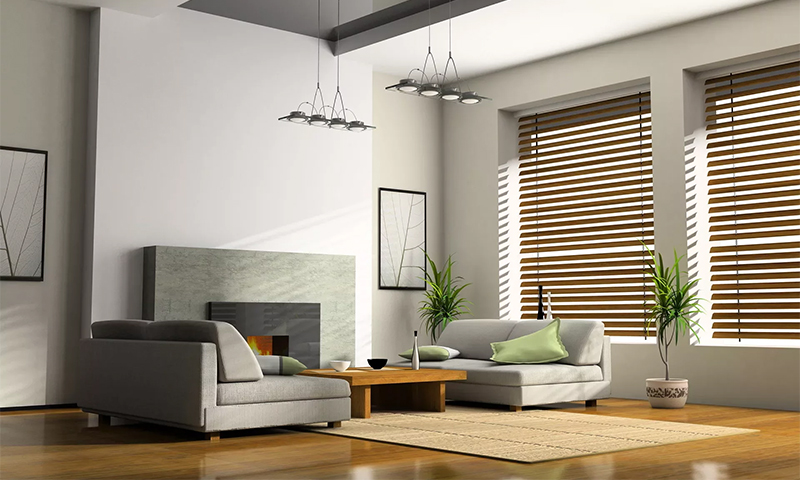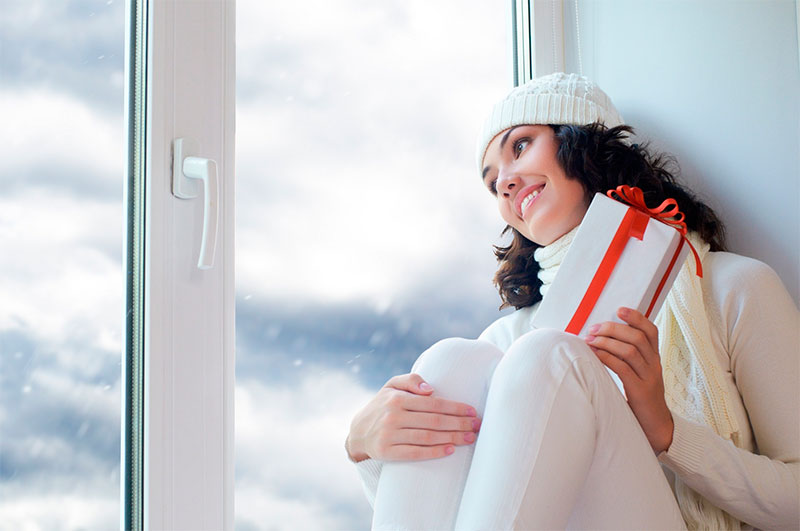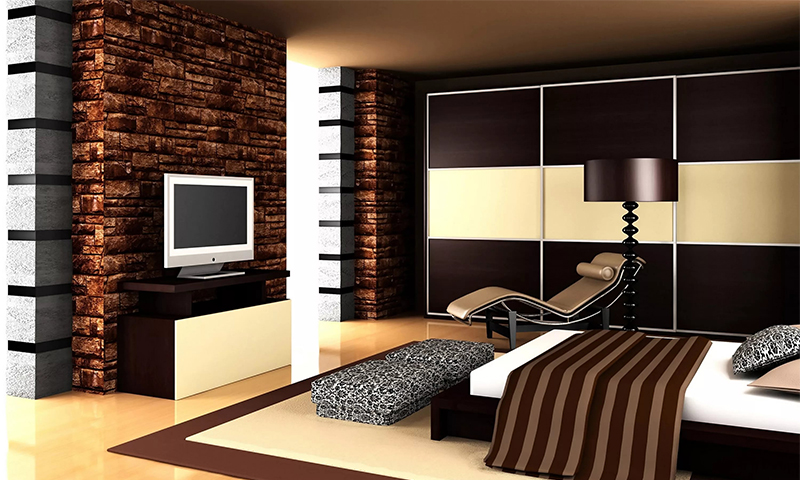Every home begins with a door. It depends on the beauty of the facade, the preservation of heat in the room and security from vandal and intellectual hacking. Doors of various materials are made, and the variety of decoration and design forms is amazing. Install the sash not only at the entrance to the building, but also in the corridors, offices, offices, apartments. How not to get lost from their types and quantity, and to pick up the doors in each particular case?
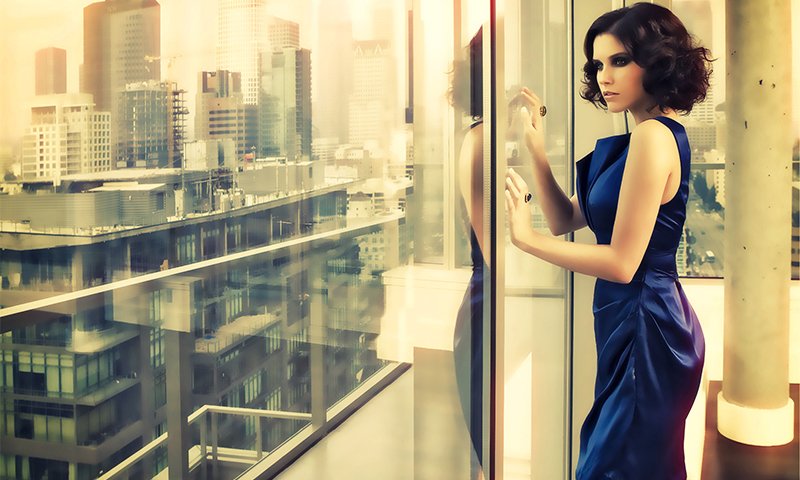
Content:
The best door manufacturers - which company to choose
To quickly equip the doorway, you can contact the trusted manufacturing companies:
- "Outpost";
- The Guardian;
- Intekron;
- Yoshkar Ola;
- "Bulldos".
See also:
For a fully self-selected door in terms of parameters, we offer detailed instructions below.
The principle of operation and the device door

Doors perform very important functions:
1. Keep warm or cool, depending on the time of year;
2. Access is blocked for strangers;
3. Decorate the facade or room;
4. Isolate from external sounds;
5. Divide the room into zones.
They are installed in apartments, houses, cottages, hospitals, schools, offices. Constructions are internal and street, front and technical, fire-fighting and ordinary.
Most doors have several identical elements that ensure their operation:
1. Ludka is the main frame of the structure, which determines the external dimensions of the installation. It can be made of metal, plastic or wood. Responsible for the preservation of geometry and its rigidity prevents sinking and friction about the threshold. It is through the hole mounted to the wall of the opening.
2. Cloth - working part, which completely closes the opening. It can be glass, wooden, iron. Must be strong enough to resist hacking. It is endowed with special materials for sound and heat insulation.
3. Accessories - which includes handles, eye, hinges and locks. All this is intended to protect the room by reliably locking the sash, as well as improve the usability of the product.
In addition to the main elements of the door can be equipped with decorative panels, milling, forged inserts, embossing and mirrors. Canvases paint, spray, polish and varnish. All this is intended to improve their appearance and protect the surface from moisture penetration.
Types of doors
Metal doors

They are very common because they are suitable for outdoor and indoor installation. The box and sash frame are made of steel, and a metal sheet is welded outside. High-quality assembly with seams and rigid construction allow them to equip apartments, houses and offices, without worrying about the safety of property.
Advantages:
- manufacturing of any sizes;
- large selection of decoration materials;
- various types of insulation;
- rigid construction due to additional ribs;
- do not burn;
- often have two locks;
- large selection of accessories.
Disadvantages:
- heavy;
- difficult to install yourself;
- thin metal models are easily deformed.
- See also: Which buy metal entrance doors
Wooden doors

The frame and inserts are made either from an array or from MDF and veneer. There are options with daubs, where the needles are combined with pressed plates.
More dense materials are suitable for installation as input (house, apartment), others are used for internal purposes to close rooms (kitchen, hall, bath) or classrooms (hospital, school).
Advantages:
- large selection of colors;
- lungs;
- simple installation;
- oak and ash are suitable for outdoor installation.
Disadvantages:
- Mazanite constructions are easily damaged with a hard object;
- if not periodically treated with varnish, then absorb water.
Plastic doors

Poured out of plastic and have a thick frame and insulated panels. Can be equipped with glass inserts, door closers, locks and handles. Suitable for main entrances to various institutions. Used as a corridor door, exit to the balcony.
Advantages:
- easy to clean;
- do not corrode or swell;
- it is possible to make any forms and designs;
- availability in any city;
- well protect from extraneous sounds thanks to two contours of a sealant.
Disadvantages:
- get dirty quickly;
- easy to punch with a hard object;
- not the toughest design;
- may be deformed in direct sunlight.
Glass doors
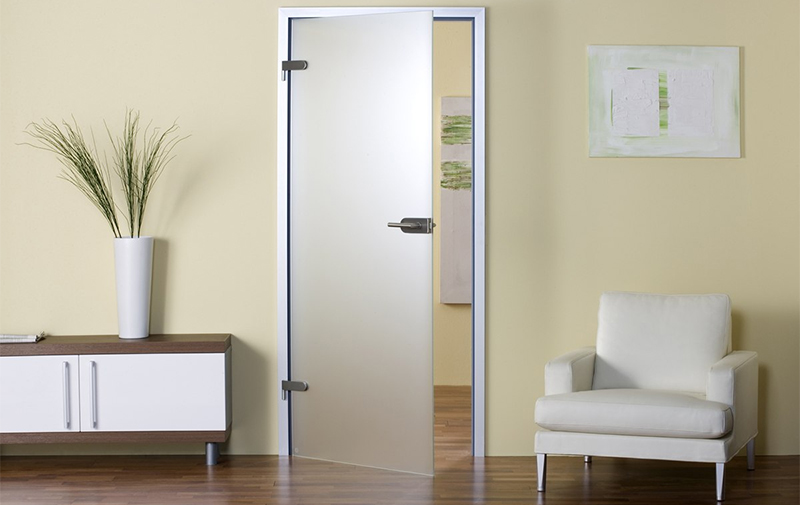
They have solid sheets of thick glass. Loops and locks are fixed on metal inserts.
Attract by their appearance and viewability, which allows visitors to explore the situation inside and awakens the desire to go. They are installed in restaurants, hotels and shopping centers. Can be completely transparent or tinted, matte.
Advantages:
- attractive design;
- various sizes;
- thick glass;
- surface hardening technology;
- wide selection of fittings.
Disadvantages:
- less protect against cold;
- can be broken.
Door selection options

Frame thickness
The safety of geometry and the fixation of the structure in the opening depends on this element. The more powerful the frame, the better the doors will be fixed and there will be less problems with friction against the threshold or the misalignment of the bolts and the openings of the locks.
1. If you plan to install wooden doors as input, then it is desirable to find a frame with parameters of 100x33 mm.
2. For the interior design is enough indicator 80x28 mm and less.
3. Plastic models for intra-house use (in the corridor) require a box thickness in the range of 20-25 mm,
4. For outdoor installation, you must look for 30-60 mm.
Metal doors are welded from steel, where the wall of iron varies from 1.0 to 2 mm.
1. If the product will be at the entrance to the cottage or apartment, it is desirable to have a metal thickness of 1.2-2 mm.
2. 1.0-1.2 mm is enough for offices and offices. The ludka itself should be a parameter of 40x25 mm or 50x25 mm.
Type of performance
In metal structures there are two ways of making ludki:
1. Welded from a profile pipe;
2. Solid bent
The first one is made by joining the prepared parts by welding, followed by welding of squares under the seal.
The second type of box is bent from a single sheet of iron on a hydraulic press with all the required steps for other elements. This is a stronger form of the frame with high rigidity. For rooms with high material values, it is better to choose this option, and for ordinary apartments and houses, the first one will do.
Thickness of the sheet
Even in metal doors, the thickness of the patch sheet plays an important role. The strength of the frame and the resistance of attempts by vandals to crush the canvas inward or bend its edge to get to the lock bolts depends on this.
1. Outer sheets are from 0.8 to 3 mm.
2. The smallest parameter is suitable only for office or apartment installation, when there is a closing access or front door.
3. For ordinary apartments, choose a sheet thickness of 1.0-1.2 mm.
4. In private houses and cottages, where attackers have more opportunities to knock with a tool in the absence of the owners, they buy models with the indicator of 1.5-2.0 mm.
5. Products with a thickness of 2.5-3.0 mm set at the box office or in places of high fire danger.
Stiffener location
Iron, wood and plastic constructions have a number of reinforcement bars, which are called stiffeners.The preservation of the geometry of the flap itself and its resistance to vandal hacking attempts depends on their number and location.
1. For interior wood and plastic products is enough one horizontal lintel in the middle.
2. Products from the same materials, but for input purposes, should have two such edges, so as not to allow the edge of the sash to bend away from the box.
3. In metal structures there is the possibility of a vertical arrangement of internal bridges, which does not allow the sash to be lifted up or down. This is an option for home installation.
4. The combined type with one horizontal and two vertical edges is considered the strongest. This method is suitable for cottages and front doors of enterprises.
Heater
If the product (iron or plastic) is planned to be put on the street (vestibule, entrance to the house) or with access to an unheated room (entrance, dormitory corridor), then it is important to choose the right insulation. It will provide protection from temperature extremes and prevent extraneous sounds.
There are several types of them, and each has pros and cons:
1. Corrugated cardboard is a wavy paper with several layers, well retains the cold, but weakly resists sound waves. The best option for apartments in the entrance.
2. Polyfoam - thick plates are well protected from noise, but cold bridges are formed at the joints. It is suitable for office doors in a populous building.
3. Mineral wool - perfectly retains heat in the winter and cool in the heat, does not burn, but shrinks when wet. A good option for apartments, offices and private houses, where the entrance is equipped with a visor to protect against precipitation.
4. Styrofoam - liquid composition is poured into the cavity of the door and freezes, completely enveloping all parts. Reliably blocks the way to sound and cold. A great option for cottages.
5. Thermal break is a complex structure of the internal structure having several layers of polyurethane foam, separated by foil and insulator, and closed by a cork panel. Such a division provides zero heat transfer between the adjoining parts, which provides reliable insulation. It is suitable for installation at the entrance in cold regions.
Coating type
Fabrics are coated with certain compounds to protect the surface from swelling or corrosion.
1. Wooden models for the interior installation is enough to paint.
2. Sash, which will stand on the street, must have a lacquer coating in several layers.
3. Metal doors painted with paint PF and similar only in the case of chain structures or internal technical.
4. For apartments and houses it is worth choosing a polymer powder coating, which preserves the appearance for a long time. This is especially important in homes without a canopy above the entrance.
Foma designs and sizes
Doors of all materials can have standard and individual sizes, from which it is determined and the shape of the structure.
1. Most interior openings have a width of 80-90 cm, which requires a single leaf, where the dimensions of the box will be 1-2 cm less for mounting clearance.
2. Entrance and corridor structures are from 850 to 1600 mm wide. Size up to 1100 mm permits the production of single-leaf canvases, but they can have a large mass and be inconvenient for users, which is not suitable for a school or hospital, and can only be realized in the private sector.
3. The space of 1200 mm is better divided by 900 mm with the main blade and 300 mm for auxiliary opening, when there is a need to launch a large number of people or carry furniture. It is suitable for cottages and businesses.
4. It is advisable to equip wider openings with two full-size doors of 800-900 mm each, which will allow visitors to pass freely during rush hours. This is an option to enter a large enterprise, school, university or shopping center.
The height is standard size from 1950 to 2100 mm. In this case, the sash of any material is made whole.But if the height is 2200 mm and more, then such a canvas will release a lot of warm air when plowing in winter and start the heat in summer.
Here it is advisable to order a transom of the same material as the sash (plastic, wood, glass), but to keep the door height 2000-2100 mm, and the rest of the space above the entrance to sew up a solid. This will reduce the weight of the canvas and reduce heat loss.
Finishing material
Metal doors are made not only painted, but also equipped with finishing materials. They are placed both outside and from the room side. They additionally warm the design and decorate the look.
The most common are the following types:
1. Laminate - pressed panels have a smooth structure and are easy to clean. Suitable for apartment doors and offices.
2. Lining - narrow strips of natural wood, arranged with herringbone or squares. They are well warmed, but have an outdated design, which makes them applicable to the garden.
3. Vinyl artificial leather - leatherette with various colors, insulated with isolon. It washes well and protects from cold, but it is easily torn. It is better to put it on the canvases where there are few outsiders.
4. MDF is a modern compressed material having a thickness of 4 to 16 mm. It can be smooth or embossed. Looks very noble. Suitable for apartment, home, office.
5. Array - applied solid rock (oak, ash). Very durable panels that serve for a long time. Suitable for restaurants, hotels, offices of major corporations and cottages.
Dressing
The surfaces of some doors can be additionally decorated with various elements:
1. Milling is good on natural wood and MDF. This is a great option for offices, interior doors or homes.
2. Mirrors and forging make the appearance rich, and it is suitable for cottages and restaurants, hotels.
3. Photo panels immediately attract attention, which is beneficial for advertising or design agencies.
Lock class
When choosing doors a large role is played by the presence and class of locking devices. For interior doors, you only have to take care of a revolving knob with a tongue, and for the bathroom also an internal valve or blocker.
Entrance doors are divided by locks from 1 to 4 classes, which implies different times for their opening with the help of master keys:
1. Class 1 should only be selected for technical doors that store low-cost inventory.
2. The 2nd is suitable for entrances and main entrances, after which there are other doors or a guard.
3. Third class takes up to 10 minutes for thieves to intellectual hacking, which makes it suitable for the private sector. During this time, the alarm will work and an outfit will arrive.
4. The 4th is chosen in apartments and cottages, as well as rooms with material values.
Even better is the presence of two locks on one door of a different class. For example, a combination of the 2nd and 4th or 3rd and 4th. This will delay the burglar as much as possible and protect the property.
Number of sealing contours
To delay drafts and sound waves use the contours of the seal. They are created from a hollow gum, attached to the perimeter of the barrel or web. When closing the porch, it flattens out and tightly closes the gap. Such contours can be from 1 to 4.
1. For interior doors there is no need for a seal.
2. In the apartment model, facing the entrance, enough 1-2 circuit.
3. For offices, use the same value to reduce noise from the corridor.
4. Houses and cottages need 3-4 contours.
Hinges
All doors rotate on awnings. They are normal (steel rod and mating sleeve-fist), on bearings, with ball and hidden. The number of these elements on the structure also varies.
1. For light doors of 10-30 kg, two external hinges are sufficient, with or without balls.
2. In canvases from 40 to 80 kg two overhangs on bearings will be required.
3. It is better to equip designs from 90 and above with three hinges on bearings.
In places with increased danger, with external sheds, counter-removal must be provided - two pins on the end of the leaf, preventing the removal of the blade, even if the loops are cut off. If a model is chosen without counter-removal, it is better to have hidden loops inside the structure.
The presence of a window
In all types of doors a window may be provided. Through it is convenient to see what is happening outside the canvas.
1. For interior products it is practical in the kitchen to close the rooms from smell, but look after the children.
2. Shops are so attracted to the range of goods inside.
3. In the case of a shopping center or restaurant, you can see the person coming out and avoid hitting with a sash.
4. For the private sector, a window in the front door will show who came.
Choosing a model with a window is to determine the number of cameras between the panes. They are from 1 to four. The air space in each compartment provides a thermal gap and the safety of the microclimate in the room.
1. It is better to equip all the canvases that are in contact with the street with 3-4 cameras.
2. For corridors and interior doors 1-2 is enough.
Which door to choose

1. In the bedroom, living room or children's room, doors made of MDF with stained glass, a turning handle with a tongue, a narrow piece of 80x28 mm, covered with paint or varnish will fit.
2. For the entrance door to the apartment you will need a metal construction of standard dimensions, with a steel wall of 1.2 mm, from a 40x25 mm profile, 1.2 mm overlay sheet, decorative MDF panel outside and laminate inside, 2nd and 3rd class locks, general weighing 70 kg, two outer loops on the bearings and countermeasures. Insulation is better than foam or mineral wool, 2 contours of the seal are enough.
3. In a private house or cottage, a steel structure with a metal thickness of the frame and the overlapping sheet of 1.5-2.0 mm, made of solid bent profile, powder-coated on the outside and a natural solid panel inside, insulation - mineral wool or polyurethane foam is necessary. The insert can be made of glass with a decorative forged lattice. The weight of such a door will be 100-120 kg, which will require three hinges and counter-removal. Inside the canvas it is important to have three stiffeners of the combined type. The class of locks 3rd and 4th.
4. A plastic construction with a frame thickness of 40-60 mm, transparent glass in a four-chamber window, one third-class lock and warmed with mineral wool in the lower square is suitable for the main entrance to a hospital or other state institution.
5. The shopping center will require a glass model with a panel thickness of 6 mm, aluminum glass holders and long handles. The height is not more than 2200 mm, and the rest of the space is better to close the inserts of the same material.
How much do the doors cost
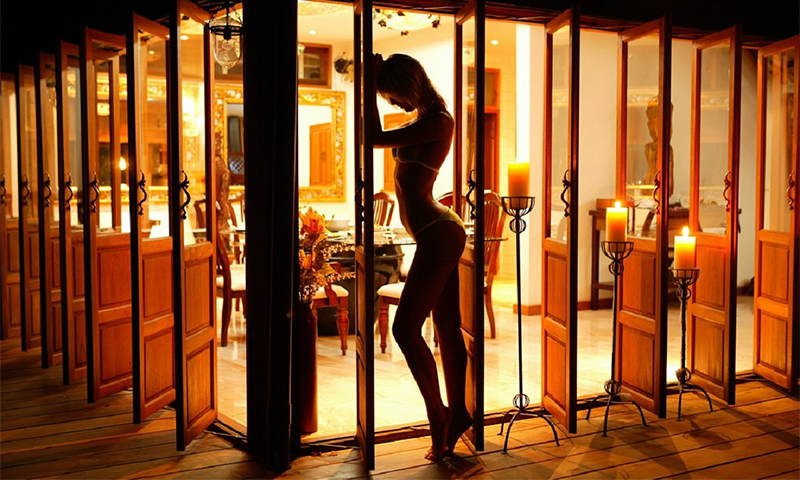
1. Interior wooden models cost 2000-8000 rubles.
2. Metal structures for installation in an apartment cost 7000-15000 rubles.
3. Iron doors for a private house are estimated at 13000-30000 rubles.
4. Plastic models sell for 15,000-28,000 rubles.
5. Glass designs cost 6500 rubles. per m2.
It will be interesting to friends too



